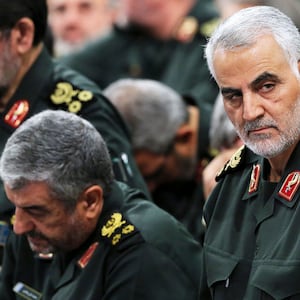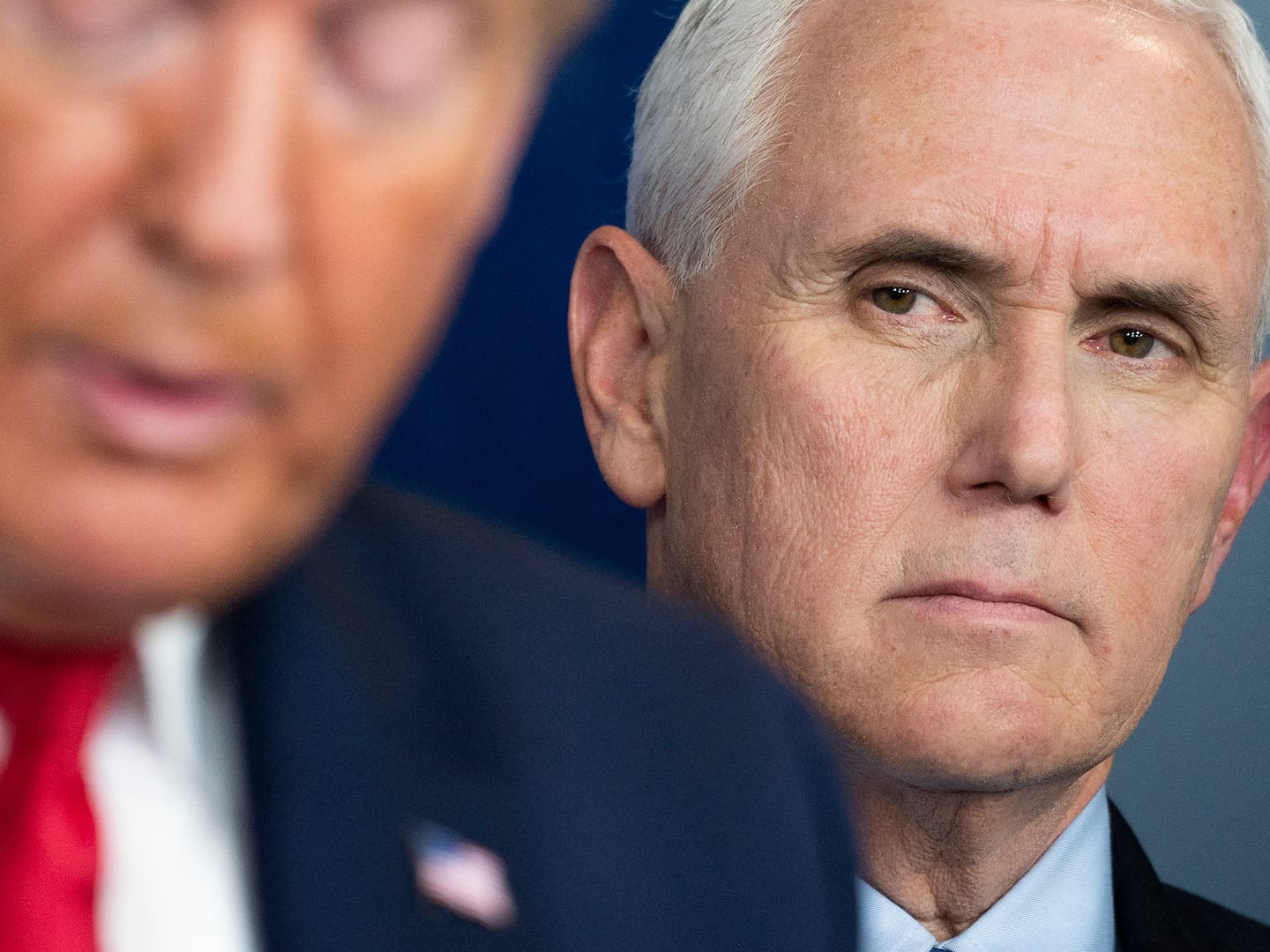Until the Trump administration blew him away in Baghdad in the pre-dawn dark of Friday morning, Qassem Soleimani had made the very fact of his survival part of his considerable mystique. The powerful Iranian general commanded forces that had become the scourge of Iran’s adversaries abroad, especially the United States and Israel. Yet he came and went to the war fronts of the Middle East unscathed.
In fact, conscious decisions were taken under the George W. Bush administration, even when Soleimani was in the crosshairs, not to pull the trigger. Gen. Stanley McChrystal wrote last year, he had a shot in 2007 but let Soleimani go: “The decision not to act is often the hardest one to make—and it isn’t always right.”
Ali Khedery, a former U.S. adviser in Iraq, told The Daily Beast that not striking Soleimani when they had the chance was an “enormous frustration to me and many of my colleagues.”
“I remember during the [2007 Iraq troop] surge sitting with Ambassador Ryan Crocker and [Gen.] David Petraeus and saying, ‘Wouldn’t it be a shame if Soleimani ran into one of his own EFPs,” Khedery added, using the acronym for Explosively-Formed Projectiles, the Iranian-made bombs that killed dozens and dozens of American troops in Iraq. “But obviously, this was a decision that had to be taken by the president personally because of its implications.”
Under the Barack Obama administration, the assassination of the most famous general in the Iranian Islamic Revolutionary Guard Corps appears not to have been considered seriously.
There was never any manhunt, according to Derek Chollet, assistant secretary of defense from 2012 to 2015. “To my knowledge there was never a decision of ‘We’ve gotta go find this guy and get him.’”
Nobody could begin to be sure what would come next if Soleimani were killed, and no scenario looked good. And in those days the priority was stopping Iran from developing a nuclear weapon without having to go to war. The murder of Soleimani could have scuttled the negotiations.
The calculus was a fairly simple one, says Chollet: “Do the potential risks of taking an action like this outweigh the gain of taking him off the battlefield?” The answer was yes.
According to Patricia Ravalgi, who served as a civilian analyst at U.S. Central Command from 2008 to 2019, concerns at the operational level went beyond declined opportunities to terminate Soleimani. There was often the worry among military planners and Washington policymakers that with Iranian-backed militias and American troops operating in close proximity in Iraq, especially during the campaigns against the so-called Islamic State, Soleimani would be in the wrong place at the wrong time, get killed by accident, “and all hell would break loose.”
“There was even wishful thinking that Soleimani would stay out of Iraq more, to keep such an accident from occurring,” says Ravalgi.
But why didn’t the Israelis target Soleimani?
According to Soleimani, in an interview given just three months ago, they did.
Speaking to Iranian television last year, the head of the élite Quds Force of Iran’s Revolutionary Guard Corps claimed that Israeli aircraft targeted him and Lebanese Hezbollah leader Hassan Nasrallah in 2006, while Soleimani commanded forces in Beirut during the Second Lebanon War.
“Israeli spy planes were constantly flying overhead,” he said as he began his war story.
Hezbollah, an Iranian backed militia, had its situation room in the heart of Dahiyeh, a Beirut neighborhood, and the Israelis were “watching every movement,” Soleimani said.
Then late one night, he and Imad Mughniyeh, Hezbollah’s most notorious terrorist operative, decided to remove Nasrallah to safety in a separate building. Shortly after their arrival, two Israeli bombardments struck nearby, he said.
“We felt that these two bombings were about to be followed by a third one… so we decided to get out of that building. We didn’t have a car, and there was complete silence, just the Israeli régime planes overflying Dahiyeh,” he recalled.
Soleimani said he hid under a tree with Nasrallah from what appeared to be heat-seeking drones while Mughniyeh went in search of a car. Afraid the car was also being tracked, they eventually switched cars in an underground garage, supposedly confounding the Israelis.
Mughniyeh’s luck did not last long. He was blown up in Damascus in 2008 in an operation later attributed jointly to the CIA and Israel’s Mossad.
An Israeli military officer with knowledge of Israel’s Iran preparedness told The Daily Beast that when the Americans took out Soleimani this week, “It wasn’t a surprise, not really.”
The officer, who spoke without attribution because he was not authorized to speak with the media, said there had been previous Israeli and American efforts to eliminate Soleimani, though it wasn’t clear to what extent the plans had advanced.
The Obama administration “asked us not to proceed,” he said. “It was clear the implications could be much greater than a localized war, the repercussions could affect the whole world.”
This time around, “We’re not involved in the American operation,” said the Israeli officer. “But the Iranians always put us together, the big Satan and the little Satan. You see people on the streets screaming death to America and death to Israel. Could we potentially get hit? Of course. We are secondary, seen as a proxy for the United States.”
In Trump’s remarks from his Mar-a-Lago resort on Friday, he claimed, “We took action last night to stop a war. We did not take action to start a war.”
But as his predecessors understood well, the decision to assassinate Soleimani has opened the door into the unknown and the unknowable.
“We need de-escalation,” one anxious Iraqi official told The Daily Beast, “and this is the mother of all escalations.”
—with additional reporting by Spencer Ackerman











